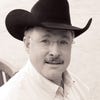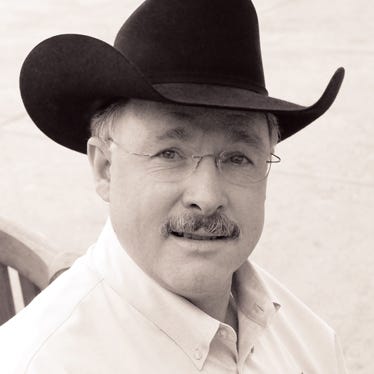Sustainability In The Beef Feedlot Sector
“Old feedyards never die, they just lie there and rust,” says Bill Mies, a Texas A&M University professor emeritus who cut his teeth managing commercial feedlots. “Then when the first good times come along, someone goes in, fixes the fences and starts feeding cattle again”
March 1, 2011

“Old feedyards never die, they just lie there and rust,” says Bill Mies, a Texas A&M University professor emeritus who cut his teeth managing commercial feedlots. “Then when the first good times come along, someone goes in, fixes the fences and starts feeding cattle again.”
The fact that cattle-feeding capacity never goes away continues to define the key challenge to the commercial cattle-feeding business.
“The model has always been that cattle feeding is simply a margin business that has to adjust to the reality of the marketplace,” Mies explains.
But cattle feeders have never adjusted to the reality of a declining cowherd, though many recognized the problem at least a decade ago. Instead of retiring pen space, Mies says feedlots increased space to match their mill capacity. Say you had a 20,000-head yard but possessed a mill that could produce feed for 40,000; in the name of diluting cost of those facilities across more production, pen space grew.
“The issue that has plagued us for 8-10 years is the mismatch between feedlot capacity and the size of the cowherd,” Mies emphasizes. “It depends on the numbers you look at, but I say we’ve got 25% more pen space than we’ve got cattle to feed.”
As too much pen space chases too few cattle, Mies explains, “it causes some to make questionable bidding decisions in order to keep pens full.”
Packers face the same sort of supply-capacity imbalance. But, Mies points out, it’s easier for packers to adjust. Packers can vary the number of shifts at different plants from week to week, as well as the volume bought and so on.
When Tyson Foods announced it was ceasing beef slaughter at its Emporia, KS, plant in 2008, Dick Bond, CEO at the time, explained, “There continues to be far more beef slaughter capacity than available cattle and we believe this problem will continue to afflict the industry for the foreseeable future. We estimate the current slaughter overcapacity in the industry to be between 10,000 and 14,000 head of cattle/day.”
Since then, of course, cattle numbers have continued to decline.
“If push comes to shove for too long, you’ll see another plant or two go dark,” Mies says.
No one wants to blink
Such decisions to downsize or cease operations are tougher for cattle feeders, since the feedlot is typically their sole livelihood.
So, the capacity dilemma continues as a high-stakes game of “chicken” – no one wants to be the first to blink, the first to be at a competitive disadvantage by feeding fewer cattle than their facilities will support.
“Everyone is just trying to live with it,” Mies says. Some are using excess capacity for alternate uses such as developing heifers or bulls. Some are converting part of their feedlot into a grow yard.
“People have tried a number of things to utilize empty pen space, but they’re only Band-Aids for an open wound,” Mies says. It’s a wound he doesn’t believe will heal, “until we look at it and say we’re all going to take out the worst 10% pens we have, and knock down the fences and take out the bunks.”
Mies knows how naïve that sounds. But, he adds, “Until this industry finds a solution, we’ll be in an ultra-tight margin situation for a long, long time.”
Cattle feeders can do very little to affect beef demand, Mies says, but they can do something about supply by the way they access and develop it. “No one has done it. Nobody likes to think about downsizing, but we’re in a smaller industry. In the 1970s when commercial cattle feeding was getting going, we had 135 million head of cattle (total inventory) and we were killing steers at 1,050 lbs. and heifers at 1,000 lbs. Today, we have 93 million head and we’re killing steers at 1,400 lbs.”
Attrition could help, though everyone understands the ancillary costs of lost jobs and income in communities. Suppose a 40,000-head yard goes out of business, Mies says that would account for a 10% reduction in 10 other yards of the same size, but the pens would still remain. What’s different these days, he explains, is that there are no buyers for idle yards, even at bargain prices. In the past, it seemed there was always someone willing to purchase a feeding facility if the price dropped low enough.
Increased numbers of cattle being fed in the Corn Belt in recent years has exacerbated the narrowing supply for High Plains yards. But, Mies points out that farmer-feeders account for only about 5% of capacity.
Risk management is essential
The capacity conundrum is intertwined with the growing need for effective risk management.
On one hand, cattle feeders are more likely than ever to utilize formal risk management. Mies says its use represents a sea change in the industry; from an option to a necessity. It’s what has allowed some to hold their assets together the past 24-36 months, breaking even or making a few dollars when cash-to-cash accounting said cattle were losing more than $150/head.
On the other hand, the core risk management tool – the Live Cattle Futures contract – is akin to a squirt gun at a grass fire.
“We’re trying to execute risk management with the Live Cattle Futures contract developed in 1965 for farmer-feeding before we built the commercial cattle-feeding industry,” Mies explains. “That was before we had 11 million head of cattle on feed, before boxed beef and closely trimmed retail cuts.”
Fed cattle were mostly all traded in the spot cash market then; cash trade continues to erode today. “Today, price discovery happens for 15 minutes every week; the contract is traded the rest of the week based on what speculators think will happen in those 15 minutes,” he says.
A solution Mies believes has merit is one Paul Engler, founder and chairman of Cactus Feeders, floated more than a decade ago: a boxed-beef contract, one for every month of the year, cash-settled, tied to the wholesale cutout value.
“Price discovery would happen twice every day (when USDA reports boxed-beef value),” Mies explains. As hog producers have done for years, it would be simple enough to convert the number to a cash cattle price, or a retail value.
“Improving risk management has to be part of our business plan, and that’s one example of how it could be done,” Mies says. “Until we think outside the box enough to do some of these kinds of things, we’ll continue to be very large farmer-feeders working on a margin.”
This is part six in an ongoing series on sustainability in the beef industry. To read more from Ishmael, find the links below.
About the Author(s)
You May Also Like




.png?width=300&auto=webp&quality=80&disable=upscale)
